Splitting at the Seams
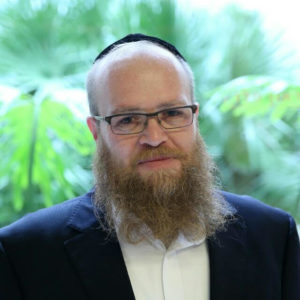

Trail of terror on Friday night: Report from the site of the Neve Yaakov terror attack

Photos: Pinchas Emanuel, Flash90
It’s Sunday morning, and in the Mizrahi family’s old-fashioned apartment in Neve Yaakov, death has moved in for the week.
People walk around with that half-dazed, puffy-eyed look of grief that comes with sudden tragedy.
A table of cookies and drinks stands on the side, per Sephardic custom, and a man arrives with a load of chairs for the mourners. But the television crews combing the busy intersection below are an indication that this is no ordinary shivah house.
Just 20 meters below the Mizrahis’ balcony, an Arab terrorist shattered the Friday night peace with a horrific rampage.
Outside a shul on the Tabenkin intersection, the murderer pumped round after round into the bodies of defenseless Jews out for a stroll after the Shabbos meal. Bullet holes from the shooting spree pockmark a neighbor’s windows.
The seven people left strewn on the newly laid pavement of Sderot Neve Yaakov included the Mizrahis’ son Eli, and his wife of two years, Natali, a nurse.
For Eli’s father, Shimon, who watched their death from above, it was like watching a nightmare unfold in slow motion.
“We knew that it was a terror attack, and they went down to help the injured,” he recalls brokenly.
“I screamed at them, ‘Don’t go, don’t go! You’ll be killed!’ But they went down anyway.”
Thirty-six hours after the worst massacre that Jerusalem has seen in years, a macabre routine takes over: the police have finished their detective work and the Zaka crews have scrubbed the streets.
Life is returning to normal — or the pseudo-normal that is the reality of life on Jerusalem’s so-called “seam” neighborhoods.
The unrest and sporadic social-media-fueled violence of the Arab sector over the past two years has turned the neighborhoods where Arabs and Jews meet into far tenser places than they once were.
For many of the residents deep inside the areas, life goes on as before. But for those living on the edges or venturing out of the neighborhood, the lack of security is pervasive.
Buses are stoned, Palestinians stream through gaps in the security fence unchecked, and there is little police presence. Underfunded and undermanned, the security services fail to invest in basic security measures like cameras.
Turf wars hamper the effectiveness of a police service stretched too thin by night after night of Arab unrest in the eastern parts of the capital.
Neve Yaakov this week is a metaphor for the volcano that is Jerusalem’s front line. The Shabbos terror could have happened in Pisgat Ze’ev, Ramat Shlomo, or French Hill — anywhere incited Arabs are mere meters from vulnerable Jewish communities.
Neve Yaakov’s residents aren’t panicked; it’s more a feeling of unease. The massacre has focused minds on what they perceive as a security vacuum at the heart of their community.
“There’s a police station one minute from the attack and an IDF base on the road above,” locals say again and again, “so why was the killer allowed to range free for so long?”
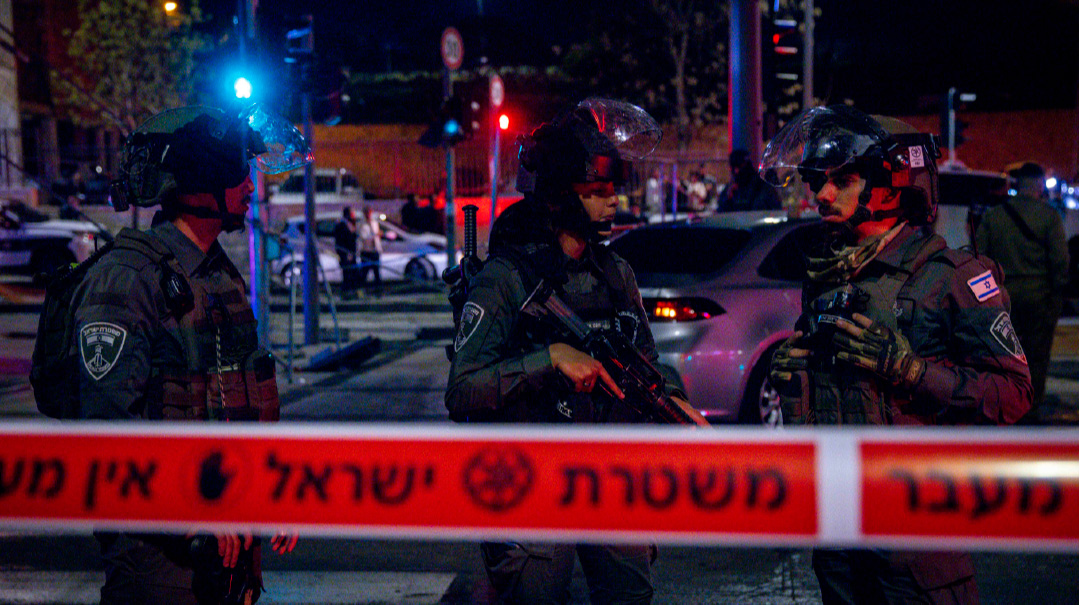
For a sign of just how ramshackle security in the capital can be, take a look in the back of Moshe Rom’s car. The Jerusalem native, a resident of Neve Yaakov, is head of the local chareidi community’s Shomrim security patrol.
Inside his white Toyota are three bulky hard drives that record the traffic around strategic intersections in the neighborhood.
“These had the only videos of the attacks,” he says. “I’ve just come back from sharing these with the police.”
That simple statement exposes an almost unimaginable truth about Israel’s security policy: In the terror-hit capital of one of the world’s most high-tech countries, authorities are literally blind. In a city that hosts one of the world’s most advanced computer-vision industries, police don’t even have a camera network to monitor known security hotspots.
Instead, it’s left to an avreich to supply footage when terror strikes.
“For years, the police didn’t invest in cameras. Until a few months ago, there were no cameras at the Beit Hanina–Neve Yaakov intersection, and ours were the only cameras in the area. When there was a terror alert, the police came to view our footage.”
Although cameras now scan the junction, which lies astride the road to Ramallah, there are few cameras inside Neve Yaakov itself.
That’s how Rom found himself rushing to the scene of the attack on Friday night.
“I was in the Sorotzkin area for Shabbos, and although I normally only monitor the phone on Shabbos, I happened to see that the police were trying to get hold of me, and so I picked up. They suspected that the gunman had an accomplice and needed access to the cameras. I raced back to Neve Yaakov, and was there about 50 minutes after the shooting began.”
After combing through the footage, it emerged that the terrorist had acted alone.
“We started with the cameras that are close to the scene of the incident,” he says, “and finished at half past one in the morning with the cameras at the entrance to the neighborhood. No one knew what the terrorist’s route had been.”
In parallel, a police officer was attempting to piece together another part of the picture using the Jerusalem municipality’s cameras overlooking Neve Yaakov Boulevard.
“The Jerusalem police do not have cameras that record what is happening inside the city’s neighborhoods,” reveals Rom. “They have cameras on main thoroughfares, in the Old City, and in areas where there is a security risk.”
Bureaucratic turf wars between the Israel Police — a national body — and the Jerusalem municipality explain the lack of coordination between the various security organs.
But ultimately, it comes down to money. For years, the Shomrim lobbied for cameras to be installed in local parks to prevent vandalism. But the cost proved prohibitive for the local authorities.
Under previous mayor Nir Barkat, the city renovated a Neve Yaakov park at the cost of millions of shekels, but failed to install cameras. Within a month, it had been burned down.
The current mayor, Moshe Leon, has learned the lesson in basic economics that cameras pay for themselves, but while money has been found for the devices, there’s not enough to pay for their installation.
“We have public parks with cameras that don’t operate because there is no electrical supply.”
That amateurish approach to public safety is felt on the terror front as well.
“One of the main roads in Neve Yaakov is Moshe Sneh Street,” says Moshe Rom. “It backs onto the Ramallah Road, and the residents of the street are close to the Arab neighborhoods. The local police commanders pressured the municipality to install cameras there.
“But the previous mayor, Nir Barkat, had a strategy of not putting up fences as a buffer between Arab and Jewish neighborhoods so as not to de facto divide the city.
“After a long struggle, I was able to get a budget of 150,000 shekels for cameras for the street but again, there was no electricity provision from the authorities. We had to ask an adjacent private daycare center to supply electricity for the cameras.”
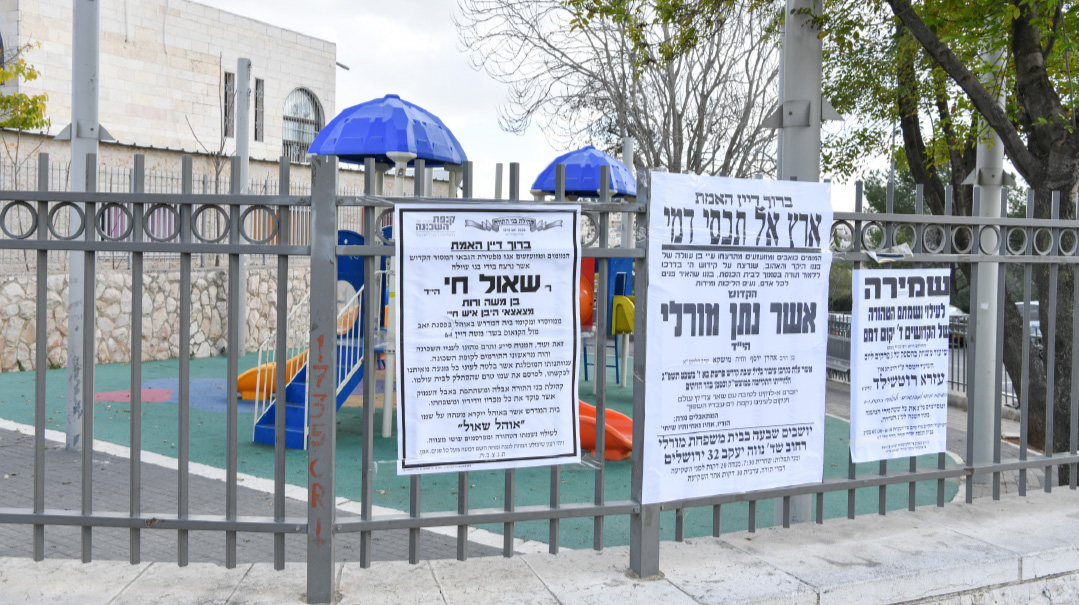
The relative security vacuum has forced private outfits like Shomrim to step up to the plate.
The initiative began because young chareidi families started to move into the main part of Neve Yaakov about 15 years ago. Back then, the neighborhood was a socio-economically deprived, crime-ridden area with many immigrants. Assaults, burglaries, and protection rackets were common, and the neighborhood provided a basis for small-time lawbreakers to act across the city.
The mere act of going away for Shabbos, the chareidi newcomers discovered, was an invitation for a robbery.
The obvious solution was a neighborhood patrol, but when private security companies proved ineffective, the local avreichim themselves stepped forward. Today, Shabbos patrols employ non-Jews who act in an official capacity as card-carrying police volunteers. In addition, a crime hotline monitors any reports of illegal activity in the area, which are then forwarded to volunteers or the police to investigate.
At one level, the Shomrim patrol is healthy civic involvement that is common in many places.
But the fact that an organization funded by 20-shekel monthly donations from 400 families has to step in to provide basic surveillance is a sign of the underinvestment and dysfunction that dogs the city’s security.
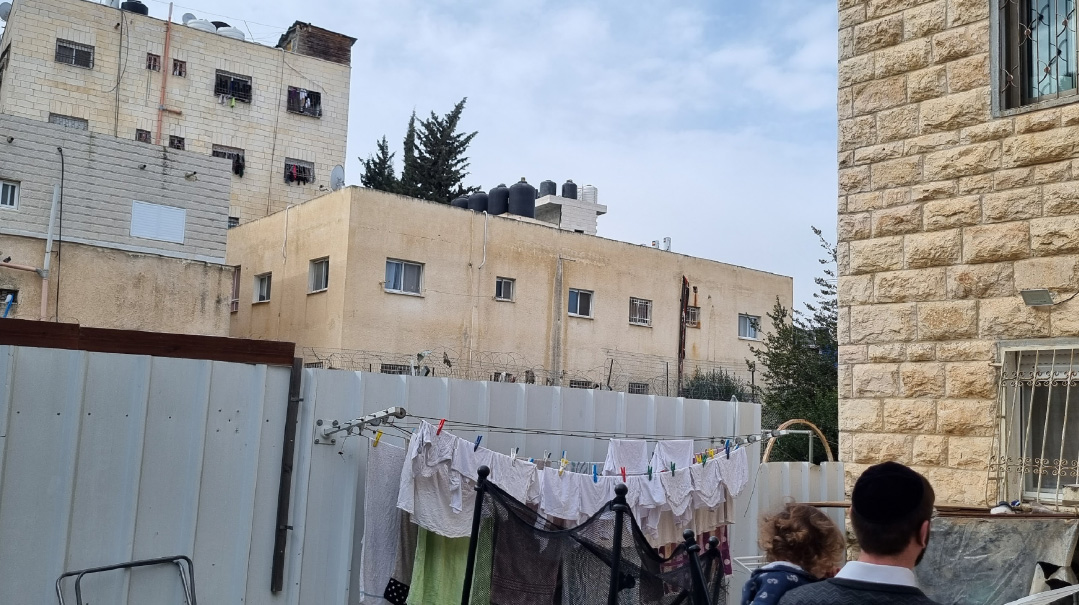
STONE’S THROW Meters away from Palestinian lawlessness, these residents feel abandoned by the state.
The end of Rechov Gamzon, a quiet side street off Sderot Neve Yaakov, is a prime example of the fact that residents in the borderlands have been left to deal with major security threats by themselves.
Behind high fences, a new terminal for Jerusalem’s light rail is being built. The blue steel-and-glass structure is a contrast to the general decrepitude of the surroundings.
But what catches the eye is that the new facility is meters away from an apartment building that is separated from the Palestinian neighborhood beyond by a fragile fence.
Here in the shade of one of the most remote buildings in the neighborhood is something of a tri-border area, Israel’s de-facto front line.
On one side is the kind of poor housing that typifies the area, and on the other — 20 meters away — are Arab houses which are clearly distinguished by the black solar heaters on their roof (for some reason, Jewish-owned houses tend to favor white).
Beyond the fencing is a patrol route used by the Border Police; a few meters behind looms the ugly concrete security barrier that divides Neve Yaakov from the Dahiat Al-Barid neighborhood.
A chareidi family lives in the last apartment by the fence, which until recently was wide open, until an extended campaign by the Shomrim persuaded the municipality to close the breach.
“I was in Bnei Brak over Shabbos,” says the father, an avreich who is babysitting his young children over lunch and didn’t want to be identified. “But when I heard the news, I immediately thought: ‘Someone has crossed the fence and murdered seven people.’ “
There’s good reason to fear that. Until recently, streams of Palestinians crossed the fence illegally each day. Even after the breach has been mended, the cockleshell fence is no match for a pair of wire-cutters.
‘When there is tension like during a Gaza operation, I lock my house and daven that we’re okay — it’s a pachad.”
The buildings are so close that when a small fire broke out in the yard, the Arab neighbors offered to send over a water hose. But mostly, there are few interactions.
“Just behind the wall is a wedding hall, and we regularly hear automatic gunfire as part of the celebrations,” says the homeowner.
The threatening sounds are a reminder of the rampant lawlessness and easy access to guns among the neighbors — a fact brough home again as a 13-year-old shot two Jews outside the Old City on Shabbos morning.
But once again, when worried citizens come knocking, none of the authorities are at home.
“The police tell me it’s the Shabak’s responsibility, and the Shabak send me to the army, who say that it’s not their job to police noisy weddings.”
Pressed on the issue of the infiltrators, the Shabak respond that the residents of neighboring Dahiat Al-Barid are friendly, some of them Christian Arab collaborators who cross the fence to get to Neve Yaakov’s police station.
But it’s cold comfort for the locals.
“What if one of the visitors happens to be a terrorist?” wonders the avreich. “What’s to stop him coming across and killing?”
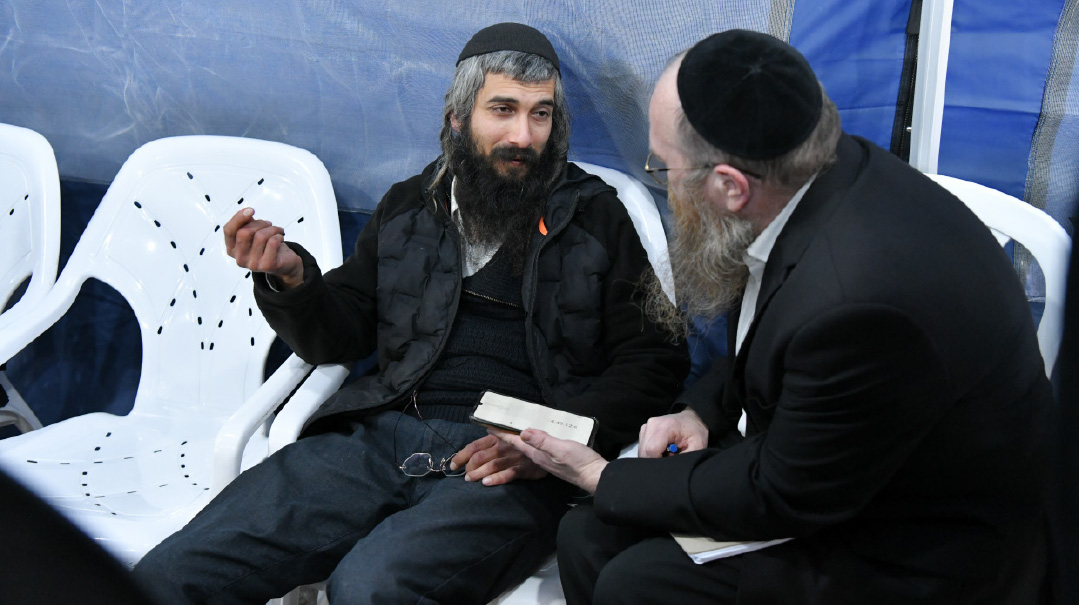
The hunt for affordable housing — and a brachah from Rav Chaim Kanievsky — is what has brought this young family to live in this nerve-wracking neighborhood, in the city’s badlands.
But it’s precisely because of this area’s exposure that the Shomrim campaigned for the bare minimum — a floodlight.
The security here is a metaphor for the chaos involving security at the seam. In what’s a pattern familiar across the area, the city paid for the light, but the hard-up residents had to supply electricity.
This corner of Neve Yaakov brings home just how porous Israel’s borders are, and the fiendish difficulty of ensuring security with two enmeshed populations.
Further along Rechov Gamzon is another avreich pushing a stroller — a common bein hasedarim sight as men pick up the child care slack while their wives work.
The fence saga, he says, is part of a regnant small-mindedness when it comes to security.
“Security here needs to be part of a government plan. They can’t just come and patch up one part of the barrier and then 20 meters away the Arabs can climb over.
“This shouldn’t come down to money,” he says. “This is about our security.”
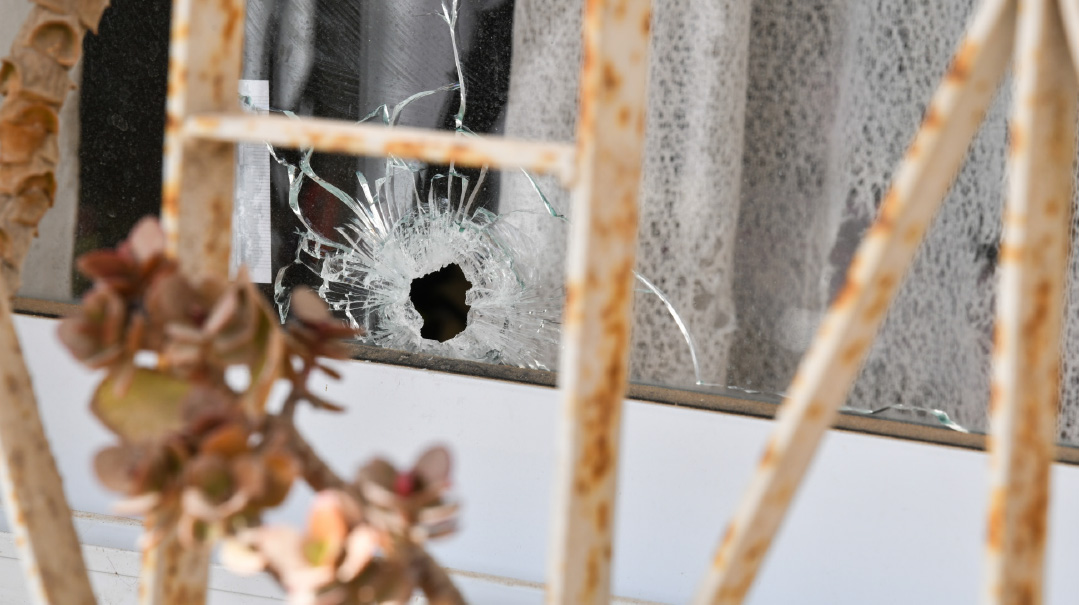
The bullets holes that shattered a neighbor’s windows
The fears that plague the residents of Rechov Gamzon aren’t shared by many in Neve Yaakov, a sprawling neighborhood home to 5,000 families.
A passerby outside the Beit Knesset Hamerkazi off Abba Achimeir, a central thoroughfare in Neve Yaakov, says that the attack came out of the blue. “Normally, we feel safe here,” he says.
Rebbetzin Malka Kaganoff, a longtime American resident of the lower, chareidi part of the neighborhood agrees. “We’ve lived here for 25 years, and the Arabs around don’t bother us.
“Most Arabs just want to peacefully co-exist, and although it’s true that in neighborhoods like these we live on a powder keg, baruch Hashem, we live our lives. The Arabs living next to Maalot Dafna, for example, are far closer than our neighbors. I don’t feel less safe than those living in other areas.”
Rabbi Ephraim Zalman Galinsky, the longtime editor of Mishpacha’s Kolmus Torah supplement, is another veteran local. The lack of safety, he says, is most visible at the periphery.
“People inside the neighborhood don’t necessarily experience problems with security,” he says. “But last Thursday night, masked men came across the junction from Beit Hanina as the bus waited at the entrance to Neve Yaakov for the lights to change. They pelted the bus with rocks, smashing its windows, to the point where they needed to send a replacement bus. The police didn’t seem bothered by it, and the incident didn’t make waves.”
The “Broken Windows” theory of policing credited with bringing down crime rates in American cities in the 1990s posited that unchecked low-level criminality leads to more serious crimes as criminals learn to act with impunity.
That is a possible parallel to what is happening on Israeli streets today, with an emphasis on the capital.
The so-called “TikTok terror” of summer 2021 as Arab youths — inflamed with the anti-Semitism rife on social media — targeted chareidi Jews in attacks that grew steadily more violent, may have led to a feeling of impunity to act in the absence of Israeli authority.
“There’s a police-station just up the road from the scene of the attack and an IDF base above it,” says Rabbi Galinsky, “but there’s no feeling of a police presence on the streets.”
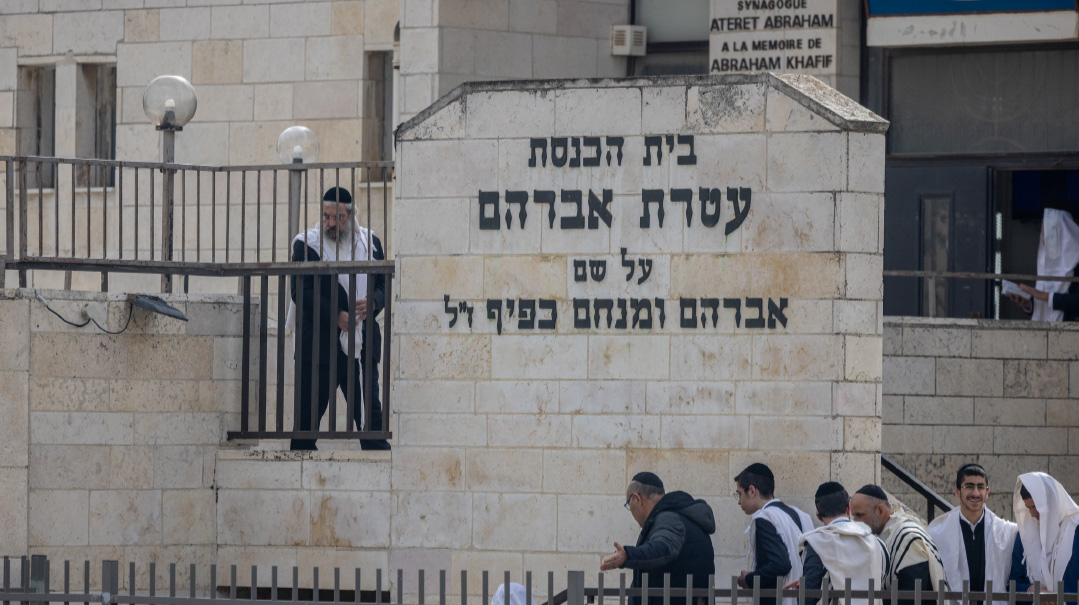
Security problems around the Jerusalem seam neighborhoods aren’t new, says Yisrael Kelerman, a Neve Yaakov resident and City Council member representing Degel HaTorah.
“I’ve been a council member for almost 30 years, and I remember that when Neve Yaakov was built, I told the mayor at the time, Ehud Olmert, that we should think about how to build the roads so that they would not be a target for stone throwers. Hir response was that we should show sovereignty and not fear, in other words, ignore the security factor.”
The building of the light railway in recent years has been dictated by the same mixture of ideology twinned with lack of funding for the necessary security architecture to make transport safe.
“The authorities invested billions in the train that goes from Hadassah Ein Kerem to Neve Yaakov through Shuafat. People don’t use it because they’re afraid. When I pressed the issue of security, I was always told the same thing: the municipality is not in charge of security, and that by Jerusalem residents traveling through Arab neighborhoods, Israel can demonstrate its sovereign control of the city.
“Unfortunately, we see what happens. There’s harassment on the train all the time. The politicians at national level need to act for the security of Jerusalem’s residents.”
The Neve Yaakov attack is the first baptism of fire for newly installed National Security Minister Itamar Ben Gvir, who refused to comment for this article. But having campaigned strongly on the issue of terror and Israeli sovereignty in Arab areas, the pressure is on him to demonstrate results, not just resolve.
An initiative to create a National Guard providing a large manpower boost for the Border Police who patrol restive Arab neighborhoods has Ben Gvir’s backing.
With thousands more police officers available, a repeat of Friday night’s response — in which local officers from the Neve Yaakov station were out patrolling in the flashpoint Shuafat neighborhood — will hopefully be less likely.
In the meantime, the politicians’ fighting words remain just that — words.
In Jerusalem’s interlocking patchwork of border communities, the struggle to provide a sense of safety will fall victim to meager budgets and infighting until the government decides to provide proper funding.
The large sign proclaiming that “Our Children’s Blood Isn’t Hefker” pinned to the railings of the Ateret Avraham shul, opposite which seven Jews gave up their lives on Shabbos, will be mocked by Israel’s half-hearted security policies.
“Surrounded by Arab villages like Qalandiya and Atarot, on the way to Ramallah, and with such lack of security,” says Shomrim’s Moshe Rom, “it’s easy to see that we only live here with chasdei Shamayim.”
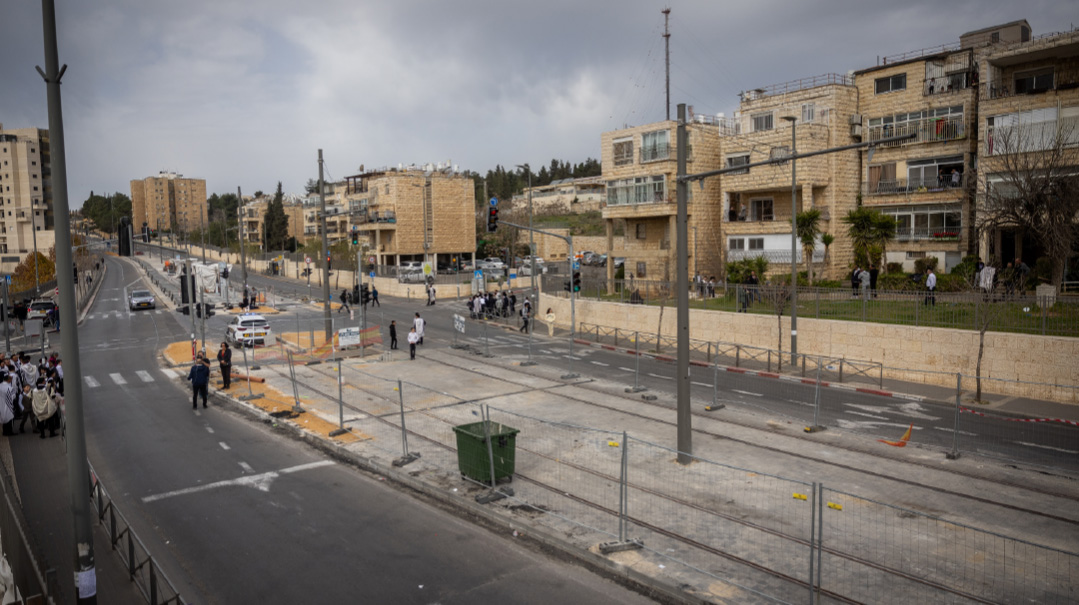
And in Their Parting, They Have Not Parted from Us
The seven victims of the Neve Yaakov shooting
Eliyahu and Natali Mizrahi: Eli, 48, and Natali, 45, had only been married two years. They interrupted their Shabbos meal when they heard gunshots, and ran outside to help. They were both shot at point-blank range by the terrorist — Natali, as she tended to another victim. She worked at Hadassah Har Tzofim Hospital, where she was brought after being shot, and where she was immediately declared dead.
Rabbi Shaul Chai: Rabbi Chai, 68, was a gabbai at the Zachor L’Avraham shul in the Pisgat Ze’ev neighborhood. He had eaten the seudah at his brother-in-law’s house in Neve Yaakov, and was on his way back to the shul in Pisgat Ze’ev to hear a shiur when he encountered the terrorist. He was a descendant of Chacham Yosef Chaim of Baghdad, the Ben Ish Chai.
Rafael Ben Eliyahu: Rafael, 55, worked for the Israel Postal Authority and leaves behind a wife and three children, one of whom is a 14-year-old son who was also seriously hurt in the attack and is being treated at Shaare Zedek. Hours after Refael was killed, a grandson was born to him. His son Ohr said in his hesped, “We passed from kiddush to kiddush.”
Asher Natan Morali: Asher Natan, 14, was, like Rabbi Chai, on his way to a shiur when he was killed. The menahel of his school eulogized him as “a boy who never hurt anyone, a gentle and kindhearted boy who never did anything bad to anyone, a boy whom everyone loved very much.”
Ilya Sosansky: Ilya was 25 and was the middle sibling between an older brother and a younger sister. He loved to ride his motorcycle. A friend of his said, “When things were going badly, he managed to find the good in it. He was always making us laugh. There was no evil in him, he was a man of peace. He died too young, before he saw the world and had children.”
Irina Korolova: Irina, 59, worked as a caretaker for Benzion Samchov, an elderly local resident. A Ukrainian citizen who arrived in Israel six years ago, she was eulogized by President Volodymyr Zelensky, who pointed out that she was “cynically” murdered on International Holocaust Remembrance Day. Samchov’s children said Irina “gave her all” in caring for their father, a blind, bedridden dementia patient. “She saved him. She treated him just like her own father.”
(Originally featured in Mishpacha, Issue 947)
Oops! We could not locate your form.







